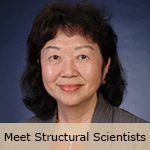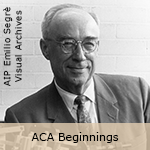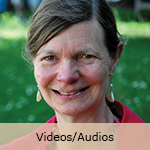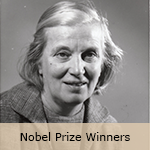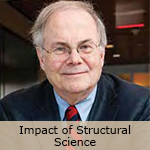Welcome to the History Portal of the American Crystallographic Association
Click on Meet Structural Scientists to see the People List. Over 100 crystallographers and structural scientists are featured.
Latest Additions
| |

|
Catherine Drennan gave the keynote address at the 2024 ACA Annual Meeting; her talk is now online at the ACA YouTube channel: "Shake, Rattle, & Roll: Capturing Snapshots of Proteins in Action". Revealing the mechanism of the metalloprotein ribonuclease reductase (RNR) was a triumph for structural science, enabled by a combination of methods including X-ray crystallography, EM, cryo-EM, small angle scattering, and protein modification, giving a result that couldn’t have been obtained in any other way. According to Drennan, these powerful techniques have delivered a Golden Age of structural science.
|
|
| |
|
|
|
|
|
 |
In his 2024 Buerger Award lecture, Thomas Albrecht (Colorado School of Mines) presented his long-term studies of actinide elements from curium to einsteinium. These are unstable, radioactive elements that are obtained in only tiny quantities, which quickly decay, some in weeks or days. Thus, the title of his talk was “A Race Against Time: Crystallography in the Outer Limits of the Periodic Table.” Watch this talk for more about the challenges of working with rare earth elements
|
|
| |
|
|
|
| |
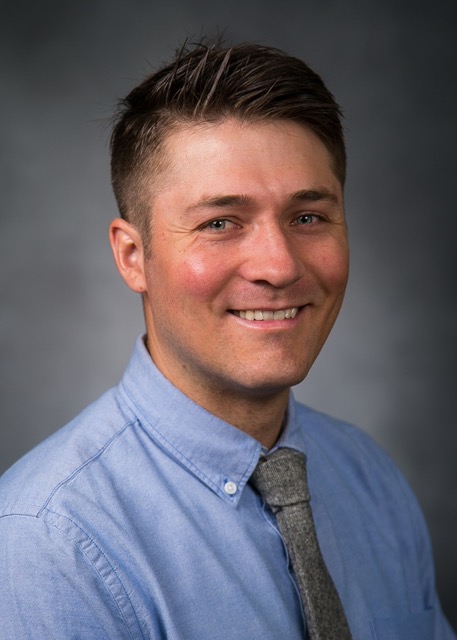 |
Benjamin Frandsen (Department of Physics and Astronomy, Brigham Young University) received the Etter award for his pioneering developments, both theoretical and experimental, of the novel magnetic pair distribution function (mPDF) method for studying short-range magnetic correlations in ordered and disordered magnetic systems, and for his outstanding leadership, mentorship and service to the ACA community. In his lecture, "When the Tail Wags the Dog, AKA Short-range Correlations With Long-range Implications: A Magnetic PDF Story," he described the evolution of the mPDF method. Frandsen studies quantum materials, in which there is coupling between different degrees of freedom, resulting in properties such as ferromagnetism, ferroelectricity, and ferroelasticity. He emphasized that small-scale variation in structure can give these materials different and possibly useful physical properties — sometimes the tail wags the dog — and gives several examples. |
|
| |
|
|
|
| |
 |
John Greedan (McMaster University, Hamilton, Ontario) presented his talk, “Exploring the Structure/Property Nexus in Perovskite and Pyrochlore Oxides,” at the Denver ACA meeting.
The Bertram Eugene Warren Diffraction Physics Award is awarded to outstanding scientists to recognize important recent contributions to the physics of solids or liquids using X-ray, neutron, or electron diffraction techniques. Greedan has made tremendous contributions to the research on structure-property relationships in perovskites and pyrochlores.
|
|
| |
|
|
|
| |
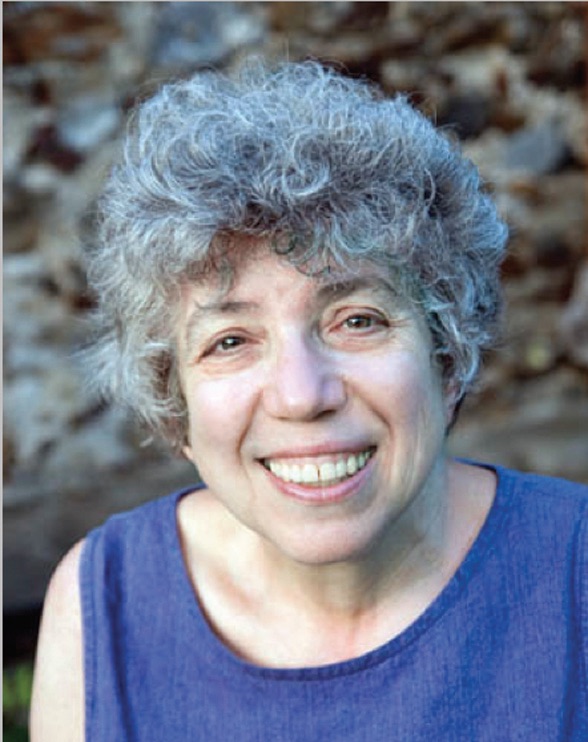 |
Quasicrystals in Context (Adapted from Chemistry World)
Forty years ago Dan Shechtman and colleagues published the paper that introduced quasicrystals to the world, followed just a few weeks later by one that explained how they were mathematically possible by Dov Levine and Paul Steinhardt. The discovery and long fight to acceptance by a sceptical community is a great story, made all the better – and more widely known – by the award of the 2011 chemistry Nobel prize to Shechtman. For more about quasicrystals, see this article by Anna Demming, and Marjorie Senechal’s memoir on the ACA History website. Sharon Glotzer of the University of Michigan, US, writes in a news & views article for Nature that the discovery 'serves as a reminder that the laws of thermodynamics … probably have many more surprises in store’.
|
|
The ACA History Project showcases and preserves the history of crystallography, X-ray diffraction, and structural science through online access, articles in ACA RefleXions quarterly magazine, and videos to our YouTube channel.

Homepage photos information here
|

